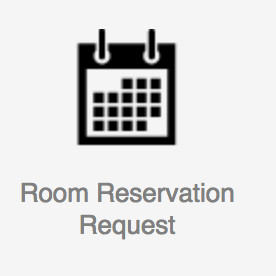*The purpose of the wiki is to quickly walk you through the steps necessary for a successful experience incorporating green screen footage into your class project.
| 1.) Review our studio polices to confirm your usage of the resources in the studio are valid and legitimate. | CMB Studio Rules |
2.) Start by reviewing your storyboards or animatic(s.) Create a list of shots requiring green screen technique, and organize them in a logical manner. If necessary, reach out to your professor, teaching assistants, technical staff, and colleagues for input or advice. It may also be helpful to research and develop VFX techniques prior to the actual production. Here are a few helpful searches on the internet. | http://www.sullivanvideo.net/tips/how-to-prepare-and-dress-for-a-green-screen-shoot-v01/ |
| 3.) Coordinate with your talent and production team members to gather a few potential filming dates. Once you have some options, use the Moody College of Communication Web App, Usher, to review the room availability for Studio 4B (CMB 4.118.) | https://web-apps.communication.utexas.edu/usher |
| 4.) Use your UT EID and password to login to Usher. Then navigate and left-click on the Room Reservation Request icon. | |
| 5.) Navigate to "I know What Room I Want" and use the drop-down menu to select CMB 4.118 - Film and TV Lab 4B | |
| 6.) Find an available date and time, and enter all of the requested information into the fields. Hit the Continue button | |
| 7.) On the next page, read the CMB rules if you haven't already done so. Then check both boxes and hit the Request It button to save and submit your reservation. You should receive a confirmation email from a technical staff member within 48 hours of submitting your request. | |
| 8.) On the day of your production, if the studio is locked find the CMB 4th floor student proctor to open the space for you. In some cases, you may be granted special permission to access the studio yourself. | |
| 9.) The green screen is located in the northwestern corner of Studio 4B. If they are blocking the green screen, pull the black and/or white cyclorama curtains gently to the left. | |
| 10.) Lighting the screen is easy! You will need to power on the fixtures which have been pre-setup to provide an LED "green wash" on the screen. Find the blue, rolling ladder in the studio. De-press the foot pedal if it is locked in place. Find the bright yellow surge protector located on the hanging grid near the center of the screen, and roll the ladder just underneath it. | |
| 11.) Lock the ladder in place by stepping on the first step, applying your weight downward. You should hear a loud clank as the ladder's rubber feet make contact with the floor. Carefully climb up the steps of the ladder to the platform at the top, using the provided handrails. Turn on the surge protector by pressing the red switch to the right. The switch should illuminate bright red, and all fixtures should power on. Carefully descend the steps of the ladder to the floor at the top, using the provided handrails. | |
| 12.) Clear the ladder from the area. Turn off the three individual banks of house lights near the pedestrian or studio doors. The wall should now be relatively evenly washed-out by the green LED fixtures. | |
| 13.) When placing your subject in the shot, however, you will notice they are really dark and really really green! | |
14.) Use the 3 point lighting technique you learned earlier in your RTF production classes to light the subject pleasingly. If you have special VFX shots which require the background plate to have a hard, direct light on your subject be sure to take that into consideration when lighting your subject. The direction of light should match the shot you intend to chromakey and composite (ie the shot is an exterior shot, my light source is the sun and it's rising in the east...subject should have a stronger light coming from Stage Left). Remember to watch out for shadows! In this example, I've cross-lit the subject from two sources on the studio floor. Notice the shadows on the floor and the right wall. If my intended shot is a Medium Close-Up and is framed properly, the shadows will not matter. However, if my intended shot is a wider shot the shadows will be more problematic. I might want to light from the grid rather than the floor. I might use trombones on my fixtures to lower them from the grid and get the source closer to my subject. This will help throw the shadow on the floor and not on the green wall. For more information on patching light fixtures to the grid circuits of the studio click here | |
| 15.) When finished, please turn off the LEDs by repeating/reversing Steps 9 - 12. | |
!! IMPORTANT !! !! NEVER LOOK DIRECTLY INTO AN LED LIGHT SOURCE !! *IF YOU ARE EXPERIENCING EYE FATIGUE OR SEEING EYE FLARES/SPOTS LEAVE THE STUDIO IMMEDIATELY AND EXIT THE BUILDING. TIME OUTSIDE AND AWAY FROM SIMULATED LIGHT SHOULD HELP REDUCE AND SUBSIDE EYE STRAIN OR SIMILAR SYMPTOMS. |



